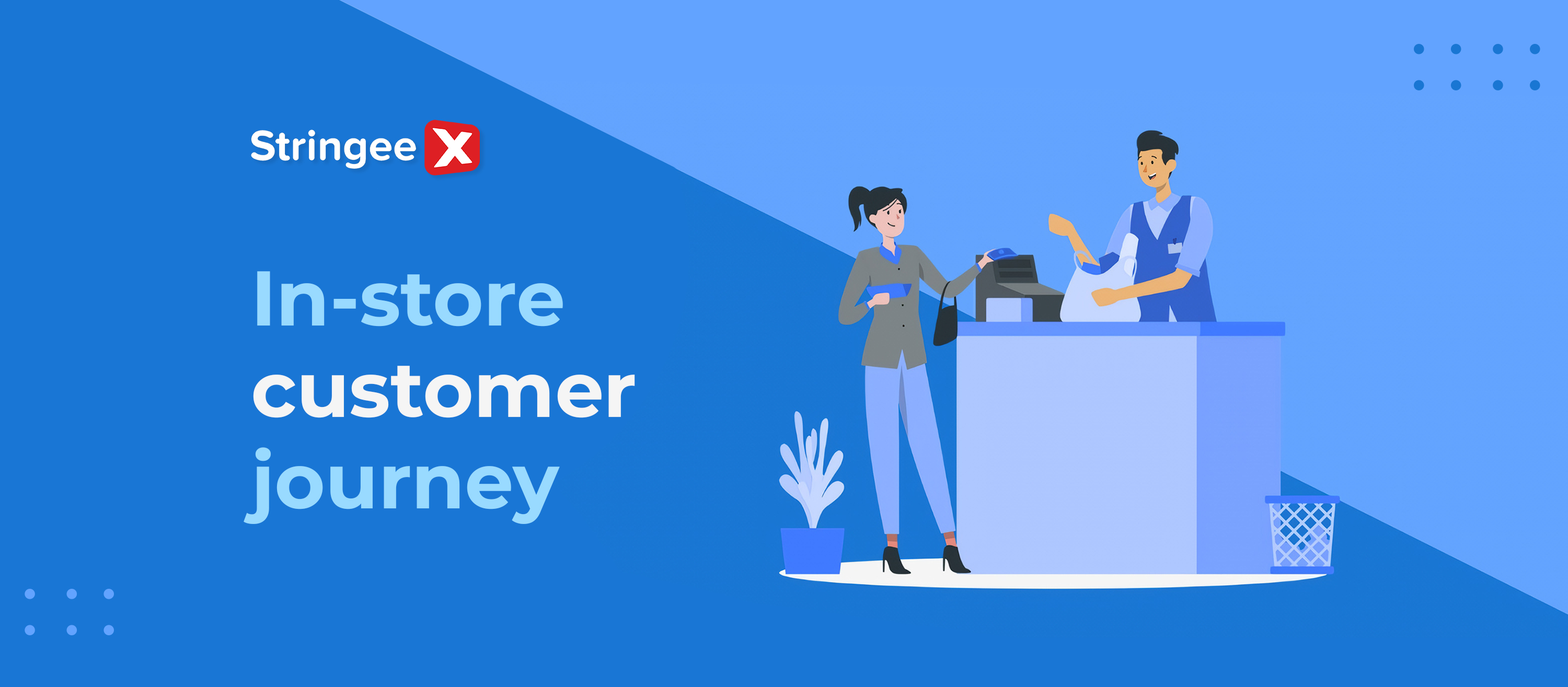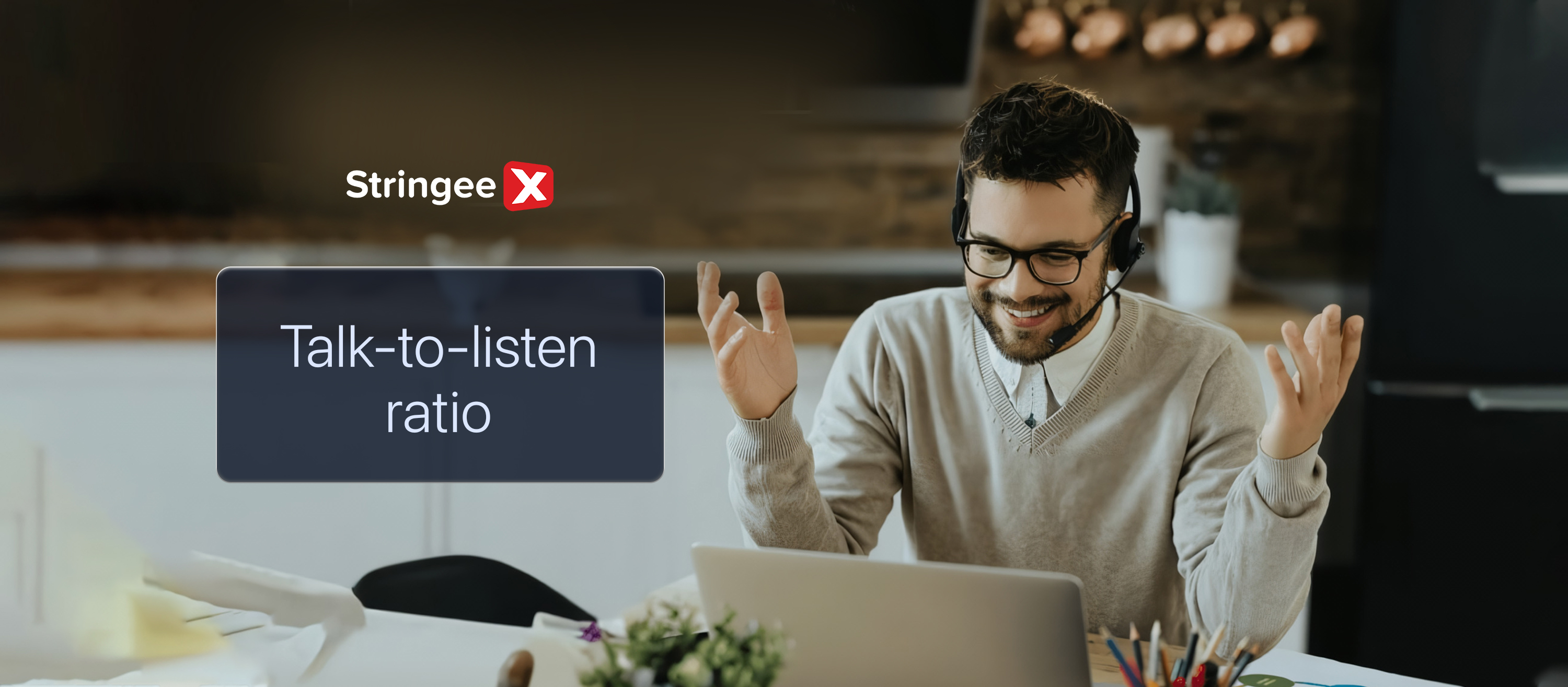Introduction
From the minute a customer first walks into your retail store to when they make their purchases (and beyond) - it's a long way to go.
Fortunately, you can shorten the process by digging deeper into every key touchpoint they encounter with your brand, and we are here to help you with that. Keep scrolling to learn more about an in-store customer journey.
An Overview Of In-store Customer Journey
It involves every touchpoint where the customer comes into contact with the brand (Image source: Wikimedia).
This journey refers to a customer's path as they interact with a physical store. It involves a series of touchpoints, any moment when the customer comes into contact with the brand. These touchpoints can be big (e.g., interacting with a salesperson) or small (e.g., glancing at a product display).
The overall goal of this journey is to create a memorable and positive experience that leads the person to make a purchase and become your loyal customer. Numerous factors play a role in this experience, including:
Store Environment
When walking into a store, the first things customers notice are likely the overall vibe and aesthetics. They love to linger and browse in a clean, well-organised space, so cluttered shelves are sure to create a negative first impression.
Lighting, music, and even temperature can play a role! For example, an energetic clothing store will thrive better with bright lights and loud songs. Go with softer elements if you want to give your customers a more spa-like experience.
Store Layout
Is it easy for your customers to move around the store without feeling cramped?
Layout aside, strategic placement (or lack thereof) also has a say in customer behaviour. That explains why eye-catching displays are usually arranged near the entrance or high-traffic areas so they can instantly grab attention and promote impulse purchases.
Most importantly, this type of accessibility must be available to everyone. Even customers with disabilities, for instance, should find it easy to navigate the store without much intervention.
Product Availability
Having the right products in stock and in sufficient quantities is crucial. Limited choices or empty shelves only lead to disappointment! All product information must be clear and (if possible) include the option to try these products when appropriate so your customers feel more empowered to make informed decisions.
Customer Service
Staff must always be available to answer customer questions (Image source: Pexels).
Customer satisfaction (often measured with CSAT score) is the backbone of every business, large or small. How customers interact with your store staff can make or break their experience and, ultimately, the business's growth.
- Ensure staff is always available to answer questions and avoid long wait times.
- Salespeople should be knowledgeable about the products and able to provide helpful advice in a friendly and welcoming manner. Any pushy tactics will likely backfire.
- Gain valuable insights into individual customer needs and offer personalised recommendations.
Checkout Process
Of course, we cannot forget the final hurdle in the customer journey: the checkout process. Long lines are always a major source of frustration, so ensure there are enough cashiers to speed things up and utilise self-checkout options to the full extent.
Offer as many payment methods as possible (cash, credit card, contactless) that cater to varying customer preferences. And most importantly, remember that even at checkout, friendly cashiers can leave a lasting positive impression!
3 Key Phases Of An In-store Customer Journey Map
Online product research before visiting physical stores has become a common approach (Image source: Pxhere).
Phase 1. Before The Customer's Purchase
Here, the seed of a potential sale is planted, as the potential customer recognizes their needs and ultimately decides whether to enter the store.
Stage 1. Discovery
Customers are becoming aware of their needs or desires and may recognize your store as a solution.
This stage usually happens before they even step foot in the physical location - for example, via online advertisement, leaflets, or social media. Word-of-mouth recommendations from friends or family also play a significant role!
Some customers browse the storefront displays to get a sense of the products offered. But in recent years, online product research before venturing into a store has become a more common approach; people will check your website, read online interviews, etc., to understand the overall brand vibe.
Ways to optimise this stage:
- A clear and uniform brand identity across all digital channels increases the likelihood that customers will recognize your store during their online research! An omnichannel virtual call centre like StringeeX is your best bet, as agents can interact with customers across all channels without switching platforms and risk disrupting branding consistency.
- Creative and visually appealing window displays can grab passersby's attention and urge them to enter the store.
- Ensure your website ranks well for relevant keywords so customers can easily find you online during their research phase.
Stage 2. Consideration
Having identified a potential solution (your store), the customer weighs the pros and cons.
Once in the store, they read labels and pick up each item on display to examine them more closely. Salespeople are usually nearby at the time, so customers will likely reach out to them to ask questions and gather extra information.
Some even take a step further and compare product offerings with competitor stores - either online or by visiting their physical locations.
Ways to optimise this stage:
- Equip salespeople with the knowledge and skills to answer customer questions confidently.
- Create displays that effectively showcase product features and benefits, encouraging customers to interact.
- Consider providing comparative information (e.g., charts, displays) to help customers differentiate your products from competitors.
Phase 2. Purchase
Having considered their options, the customer now chooses a specific product (or products) to buy. They physically take the selected items and place them in a shopping cart or collection point, then proceed to the checkout to pay for their items and finalise this purchase.
Ways to optimise the phase:
- Maintain well-organised shelves with sufficient stock and easy accessibility to avoid frustration and product hunting.
- Have a readily available supply of carts or baskets in various sizes to accommodate different shopping needs. Implement measures (wipes, sanitising stations) to encourage hygiene, especially for shared carts or baskets!
- Offer varying checkout options. Examples: self-checkout kiosks, traditional cashier checkouts, mobile wallet payments, etc.
- Train staff on upselling and cross-selling techniques, but ensure they are suggestive rather than pushy.
Extra:
It would be best to implement effective loss prevention measures (e.g., security cameras and strategically placed mirrors) to deter shoplifting and create a sense of security for both customers and staff.
Also, make sure the return and exchange policy is displayed at checkout and readily available for reference. Customers will be more at ease with their purchases when knowing they always have options if needed.
Phase 3. After The Customer's Purchase
Most assume the journey ends with the customer's Purchase phase, but that's not true. Beyond the immediate transaction, you should now focus on building long-term customer relationships!
Stage 1. Retention
Retention strategies aim to keep customers satisfied and constantly engaged with your brand even after their initial Purchase:
- A post-purchase thank-you message expresses appreciation for their business and offers extra product info/care instructions.
- Develop a customer loyalty program that rewards repeat customers with points, discounts, or exclusive offers.
- Leverage customer purchase history to send targeted promotions and marketing materials showcasing relevant products or upcoming sales.
- Offer ongoing customer support through phone, email, or live chat options to answer questions.
Stage 2. Recommendation
The ultimate goal of the After Purchase phase is to turn satisfied customers into brand advocates who actively recommend your store to others. Unfortunately, many businesses struggle to reach here!
To set yours apart from the race, adopt some of our tips:
- Keep going with what you have been doing in the Retention stage. After Purchase is an ongoing process, so you cannot just press the "Pause" button.
- Host contests, giveaways, or polls to encourage customer interaction on social media platforms.
- Encourage customers to leave positive online reviews by making the process easy and accessible.
Actionable Analytics For A Successful In-store Customer Journey
You should offer more variety for popular product categories (Image source: PlannThat).
Local Demand
This metric refers to specific products or services most desired by customers in your store's location. Once you have analysed sales data and customer browsing behaviours to identify popular products in your area, you can:
- Ensure you stock enough of the high-demand items
- Offer more variety for popular categories
- Highlight in-demand products in local marketing campaigns and promotions to drive targeted sales.
Customer Engagement Time
How long does a customer spend actively interacting with your store (browsing products, interacting with displays, speaking with salespeople, etc.)? This analysis could help you:
- Identify areas where customers might lose interest and adjust accordingly
- Strategically place high-engagement products to draw customers deeper into the store.
- Train staff to engage customers more effectively
Service Time
Service time refers to the average amount of time it takes for a customer to complete a specific service, such as waiting in line for checkout or receiving assistance from a salesperson.
Why is this metric important? The goal is to:
- Ensure you have enough staff on hand to handle customer flow efficiently, especially during busy periods.
- Evaluate the effectiveness of self-checkout kiosks compared to traditional cashier checkouts.
- Identify bottlenecks in the checkout process to reduce wait times.
Conclusion
With so many touch points throughout the in-store customer journey, ensuring a frictionless shopping experience is undeniably challenging. However, we do hope our helpful pointers have eased some of your burden. Feel free to reach out if you need further assistance!










